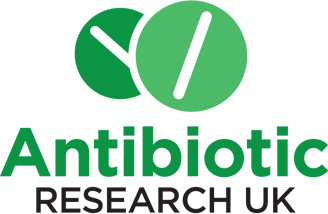Bacteria in the body
Bacteria have existed on our planet for over three billion years. The human body contains trillions of bacteria – they even outnumber our own cells. These bacteria colonise our gut, skin, nasal passages, mouth and more. There are many different types of bacteria, each with its own unique properties.
Gut Bacteria
The bacteria in our gut are essential for food digestion. The different types of bacteria in our digestive tract make up our gut ‘microbiome’. Research is increasingly showing that maintaining a healthy balance of bacteria here is important for many aspects of human health. Other components of this microbiome include fungi and viruses.
One way in which we can upset the balance of bacteria in the gut is by taking antibiotics. When taking a medicine that kills harmful bacteria it is unavoidable that it may also kill healthy bacteria in other parts of the body. Studies suggest that treatment with antibiotics and the resulting change in the balance of bacteria in the body could contribute to long-term health issues. These include: obesity, type 2 diabetes and adverse impacts on brain function and development.

Antibiotic resistance
Bacteria begin to colonise our bodies while we are in the womb. Provided these bacteria are maintained at a healthy number and in the right places they are beneficial to good health. Sometimes, though, these bacteria become resistant to the antibiotics we use to treat bacterial infections.
Bacteria reproduce very rapidly – once every 20 minutes. This means that the opportunity for a new genetic mutation that allows them to become resistant to the effects of antibiotics can arise often. This is a natural process, and by using antibiotics we create a ‘selection pressure’ that favours these resistant bacteria.
By destroying the non-resistant bacteria around them, we leave the resistant bacteria with less competition for resources and enable them to grow uninhibited.
Antibiotic resistance is driven by exposure to antibiotics. The more a person is exposed the more likely it is that they will also develop a resistant infection.
The three fundamental mechanisms of antimicrobial resistance are:
Enzymatic degradation of antibacterial drugs; this is where bacteria secrete substances that destroy antibiotics before they have a chance to work.
Alteration of bacterial proteins that are antimicrobial targets; this means that proteins on the surface of the bacteria are altered so they no longer act as a target for the medicine.
Changes in membrane permeability to antibiotics; this means that the antibiotic treatment can no longer penetrate the outer protective layer of the bacterial cells.
Genetic mutations in bacteria
These are all caused by genetic mutations, or new variations of genes, that change the biology of the bacterial cells. Bacteria reproduce by splitting in two, so when a bacterial cell with one of these genes divides, the two resulting cells will also have the same genes.
Unfortunately, bacteria can also share genetic material with other bacterial cells, and sometimes this occurs between species. That means that genes for resistance to antibiotics can be shared between bacteria.
Estimates suggest up to 10% of the UK population carry antibiotic-resistant bacteria. Most of these pose no health problem. However, weak immune systems such as those in the elderly, very young or the sick, can leave some people at risk of life-threatening infections.
Resistant bacteria can be passed on (transmitted) in various ways, including:
From farm animals
From contaminated food sources
By person-to-person transmission
This is a particular risk in healthcare settings
Find out more about common bacterial infections, superbugs and what you can do to help prevent the spread of antibiotic resistance.
We’re committed to fighting this global health catastrophe before it’s too late. Find out how you can get involved in fundraising or make a donation to help ensure our children and grandchildren can benefit from antibiotics, like we have.
